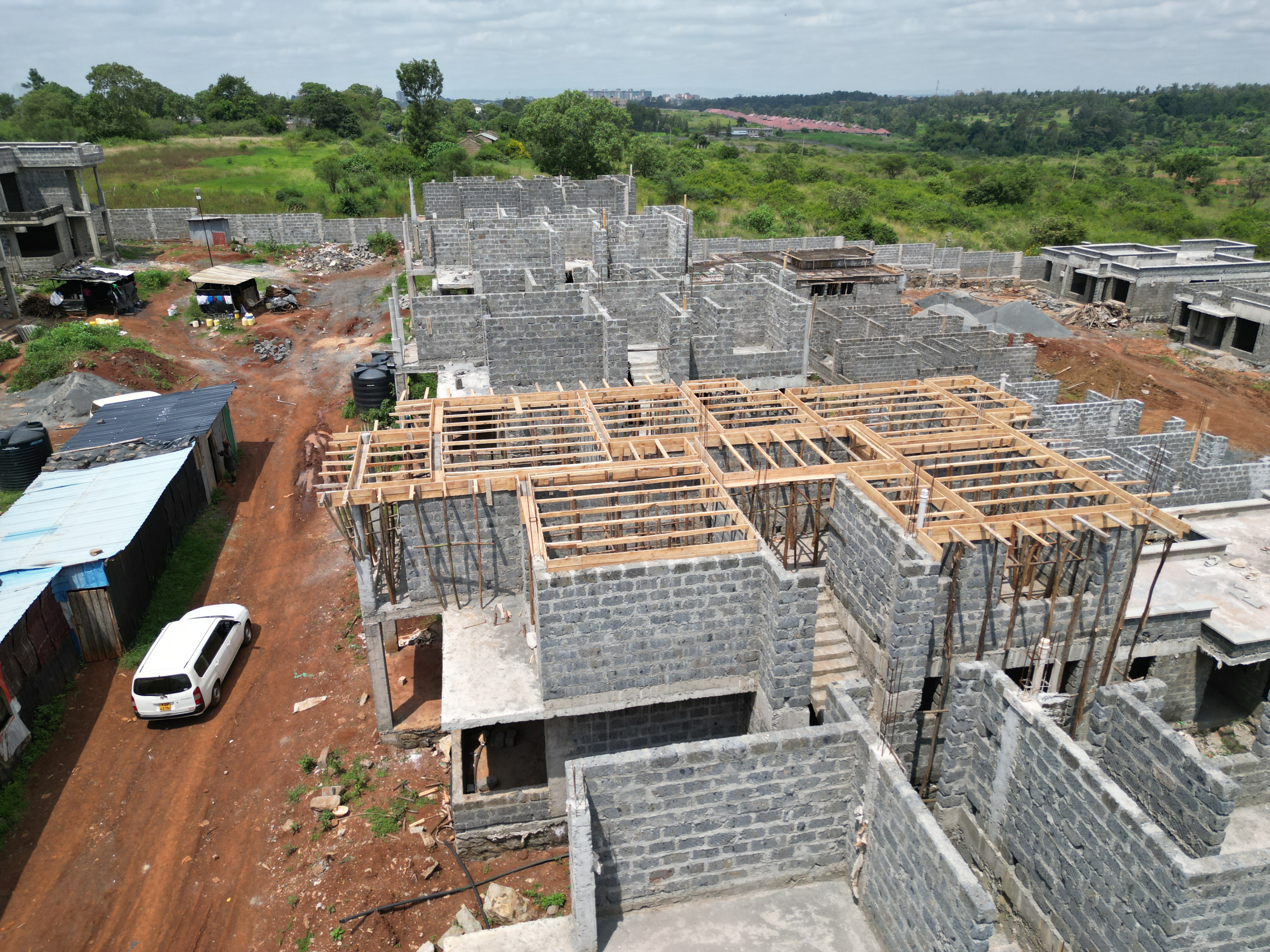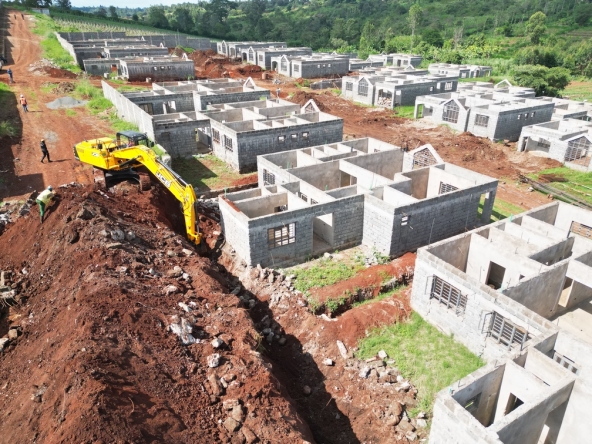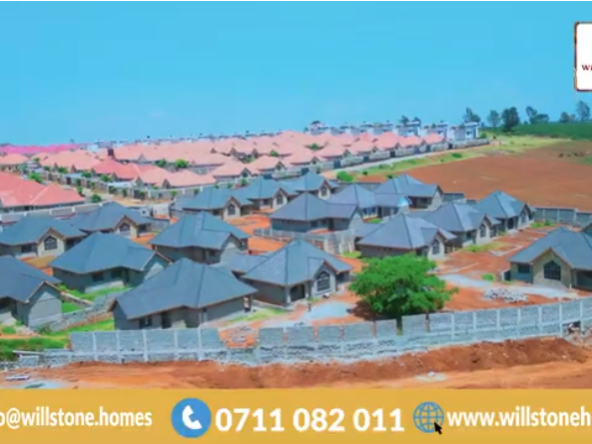From Runda to Kitengela, a new aesthetic is reshaping the skyline—sloped roof homes in Kenya are quickly becoming the hallmark of modern architecture. Once seen mostly in high-end estates, sloped or pitched roofs are now gaining traction in mid-level developments across Nairobi and its suburbs, driven by both visual appeal and practical advantages.
What Are Sloped Roofs?
Sloped roofs are roofing structures built at an angle to allow rainwater and debris to flow off easily. Depending on the pitch and form, sloped roofs can take many shapes:
- Gable Roofs – Two-sided pitch forming a triangle (common in Western Kenya and Nairobi).
- Hip Roofs – All sides slope downward to the walls (popular in Karen and Syokimau).
- Shed Roofs – Single slope roof ideal for contemporary-style houses.
- Butterfly Roofs – V-shaped inward slope for rainwater harvesting.
Read Also: Trenchless Plumbing in Nairobi: The Smart Construction Trend Saving Kenyan Developers Time and Money
Why Are Sloped Roof Homes Gaining Popularity in Kenya?
| Reason | Details |
|---|---|
| Climate Resilience | Sloped roofs are ideal for Kenya’s rainy seasons, aiding in quick water runoff. |
| Modern Aesthetics | They complement minimalist, contemporary home designs preferred by urban buyers. |
| Energy Efficiency | Better insulation and air circulation reduce heat accumulation under roofs. |
| Increased Attic or Loft Space | Usable attic space allows for extra storage or conversion into bedrooms. |
| High Resale Value | Homes with stylish sloped roofs tend to fetch higher prices in suburban markets. |
Data Snapshot: Sloped Roof Adoption in Key Nairobi Suburbs (2024)
| Location | % of New Homes with Sloped Roofs | Popular Style | Average Cost (KES/sqm) |
|---|---|---|---|
| Ruiru | 62% | Gable & Hip Combo | 1,600 – 2,200 |
| Kitengela | 55% | Hip Roof with dormers | 1,800 – 2,400 |
| Syokimau | 48% | Shed Roof | 1,700 – 2,100 |
| Juja | 66% | Gable Roof | 1,500 – 2,000 |
| Ngong | 59% | Modern Butterfly Roof | 2,000 – 2,500 |
Source: 2024 Developer Reports, Architectural Kenya Institute
Cost Comparison: Sloped Roofs vs Flat Roofs in Kenya (Per Square Meter)
| Roof Type | Material Used | Average Cost (KES/sqm) | Lifespan (Years) | Ideal Areas |
|---|---|---|---|---|
| Sloped – Gable | Gauge 28 Mabati + Rafters | 1,800 – 2,200 | 25 – 30 | Rain-prone zones like Nairobi, Limuru |
| Sloped – Hip | Clay Tiles + Trusses | 2,200 – 2,800 | 30 – 50 | High-end estates (Karen, Runda) |
| Flat Concrete | RC slab + waterproofing | 2,000 – 2,500 | 20 – 25 | Urban spaces with vertical expansion plans |
Read Also: Willstone Homes Demands Ksh 2 Billion in Damages from Nation Media Group Over Defamatory Article
Advantages of Sloped Roofs in the Kenyan Context
1. Superior Drainage
With frequent rainy seasons, especially in Nairobi and the Central Highlands, sloped roofs allow quick water runoff, preventing leaks and water pooling—a key problem in flat-roof homes.
2. Adaptability to Solar Integration
Modern sloped roofs, particularly those facing north or northeast, can be angled perfectly for solar panel installation, enhancing off-grid living in Kenya’s sunny climate.
3. Cooler Indoor Temperatures
Sloped roofs create a thermal buffer, especially when insulated. Homes in Machakos and Athi River are using this to combat high afternoon heat.
Emerging Trends in Sloped Roof Homes Kenya
- Eco-Friendly Materials: Use of recycled steel trusses, stone-coated tiles, and lightweight clay tiles is on the rise.
- Smart Roofing: Integration with rainwater harvesting, passive ventilation, and solar tech.
- Mixed Rooflines: Developers are combining gable and hip roofs for style and structural flexibility.
- Color Innovation: Earth tones and matte finishes are replacing shiny metallic sheets for a natural suburban look.
Architects and Developers Leading the Trend
Kenyan firms such as Willstone Homes are incorporating sloped roofing into most of their upcoming residential designs. Willstone Homes, in particular, has been ahead of the curve in adopting modern gable-hip hybrids that offer beauty and durability while maintaining cost-efficiency.
Challenges and Considerations
| Challenge | Mitigation Strategy |
|---|---|
| Higher material/labor cost | Use of lightweight tiles and prefabricated trusses |
| Wind uplift in high areas | Use of proper anchoring and structural bracing |
| Less rooftop utility space | Compensate with garden terraces or balcony spaces |
| Leak risk at joints | Proper flashing, underlayment, and professional installation essential |
What Homeowners Are Saying
“We chose a sloped roof for our new home in Juja and noticed the upper rooms stayed cooler all day. Plus, the resale interest has been strong,” — Mary N., Homeowner, Juja South Estate.
“Our projects now almost always include some form of pitched roofing—homeowners prefer them for both looks and function.” — Patrick W., Site Engineer, Nairobi-based Developer.
A Tilt Toward the Future
The surge in sloped roof homes Kenya is not just about aesthetics—it’s a structural choice rooted in climate response, economic logic, and future-readiness. Whether building a new home in the suburbs or upgrading an existing structure, choosing a sloped roof offers long-term comfort, efficiency, and market appeal.
If you’re planning a modern build, Willstone Homes is your go-to partner for stylish, well-engineered roof solutions tailored to Kenya’s diverse climates and communities
Read Also: No Scam Here: Willstone Homes Defends Record, Showcases Ongoing Projects




